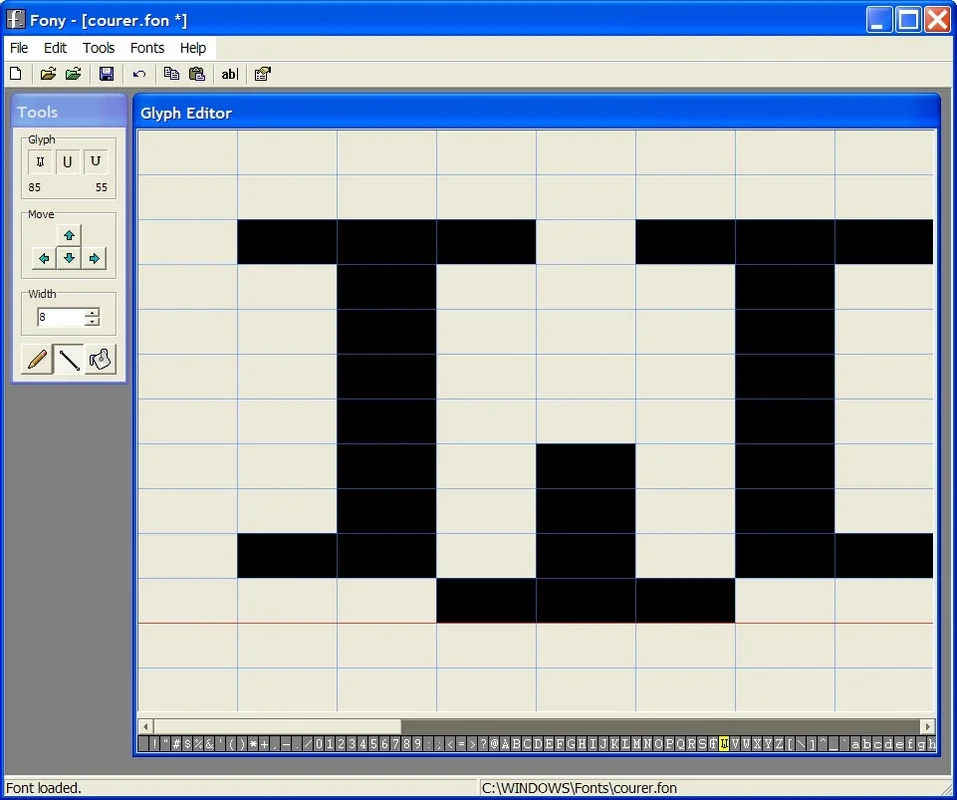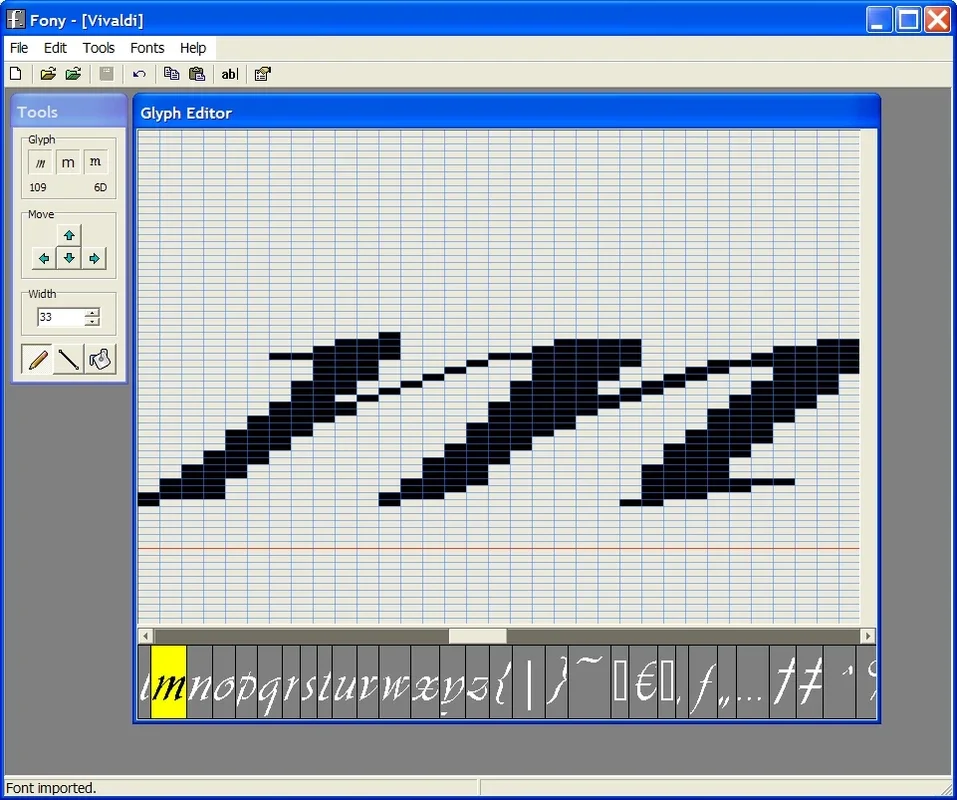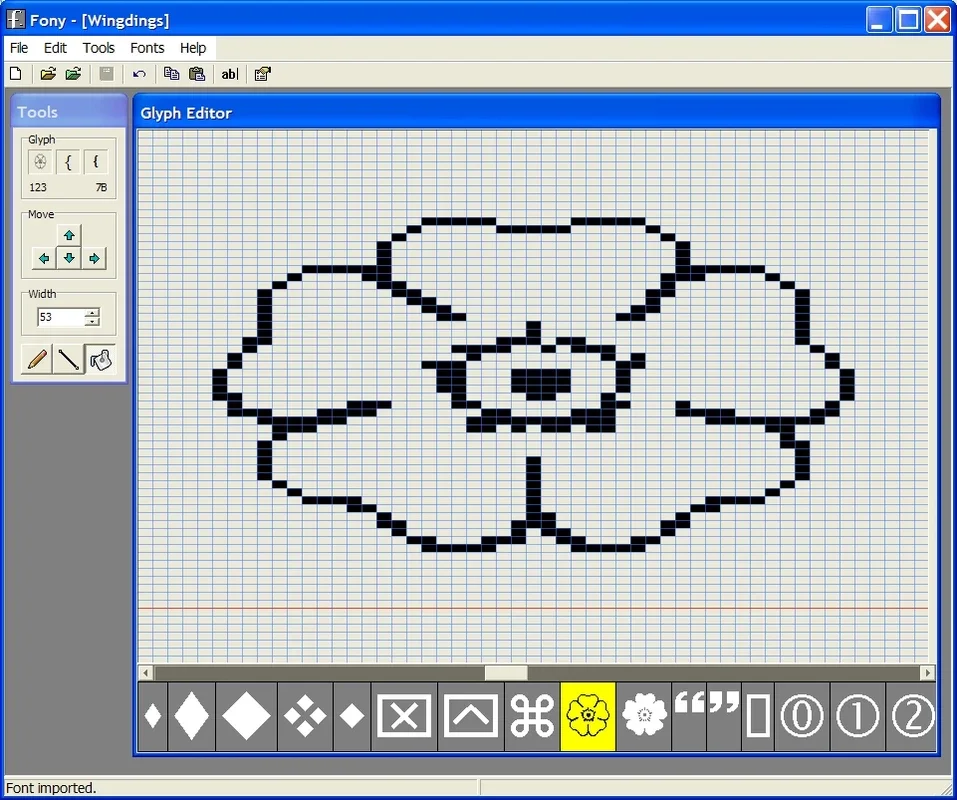Fony App Introduction
Fony is a powerful and versatile bitmap font editor designed for Windows users. It allows for the creation and modification of various font file types, offering a pixel-by-pixel editing experience unmatched by many other tools. This in-depth guide will explore Fony's features, capabilities, and limitations, comparing it to other popular font editors and highlighting its unique strengths.
Key Features and Functionality
Fony's core strength lies in its precise bitmap editing capabilities. Unlike vector-based font editors that manipulate mathematical curves, Fony allows direct manipulation of individual pixels. This provides unparalleled control over the font's appearance, making it ideal for creating unique and highly customized fonts.
Here's a breakdown of Fony's key features:
- Pixel-by-Pixel Editing: The foundation of Fony is its ability to edit fonts at the pixel level. Users can precisely control each pixel, ensuring complete creative freedom.
- Multiple Editing Tools: Fony provides a range of tools for efficient editing. These include a pencil tool for individual pixel placement, a line tool for drawing straight lines, and a fill tool for quickly coloring large areas.
- Character Width and Position Adjustment: Users can easily adjust the width of individual characters and their position within the font grid. This is crucial for fine-tuning kerning and overall font spacing.
- Support for Multiple Font Formats: Fony boasts compatibility with a variety of font formats, including Windows bitmap fonts (FON and FNT), TrueType vector fonts, Amiga and BDF bitmap fonts. This broad support makes it a versatile tool for various projects.
- Intuitive Interface: While the interface may not be as visually modern as some newer editors, Fony's layout is generally intuitive and easy to navigate, allowing users to quickly access the tools they need.
Supported Font Formats: A Detailed Look
Fony's compatibility with multiple font formats is a significant advantage. Let's delve into the specifics:
- Windows Bitmap Fonts (FON and FNT): These are the primary formats Fony excels at. The editor provides seamless support for creating, editing, and saving these common Windows font types.
- TrueType Vector Fonts: While Fony supports opening TrueType fonts, it's important to note that saving changes to TrueType fonts is not currently supported. This limitation is a key distinction from vector-based editors like FontForge.
- Amiga and BDF Bitmap Fonts: Fony's support extends to these less common formats, making it a valuable tool for those working with legacy systems or specialized projects.
Comparison with Other Font Editors
To fully appreciate Fony's strengths and weaknesses, it's helpful to compare it to other popular font editors:
- FontForge: FontForge is a powerful, open-source vector font editor. Unlike Fony, it focuses on vector-based editing, offering greater flexibility for creating scalable fonts. However, FontForge's interface can be more complex for beginners.
- Glyphr Studio: Glyphr Studio is a web-based font editor that offers a user-friendly interface and supports both bitmap and vector editing. While not as feature-rich as FontForge, it provides a good balance of ease of use and functionality.
- Font Creator: Font Creator is a commercial font editor known for its user-friendly interface and extensive features. It supports various font formats and offers advanced tools for font creation and editing.
Compared to these, Fony occupies a niche. Its strength lies in its direct pixel manipulation capabilities, making it ideal for specific tasks where precise pixel control is paramount. However, its lack of TrueType saving functionality and potentially less polished interface might make it less suitable for projects requiring extensive vector editing or a more modern user experience.
Practical Applications and Use Cases
Fony's unique capabilities make it suitable for a variety of applications:
- Creating Custom Game Fonts: The precise pixel control offered by Fony is invaluable for creating custom fonts for video games, ensuring pixel-perfect alignment and aesthetics.
- Retro Game Development: For developers working on retro-style games, Fony's support for older bitmap font formats is a significant advantage.
- Designing Fonts for Embedded Systems: Fony's ability to create highly optimized bitmap fonts makes it suitable for use in embedded systems with limited resources.
- Creating Unique Display Fonts: For projects requiring highly stylized or unique fonts, Fony's pixel-level control allows for the creation of truly distinctive designs.
Limitations and Considerations
While Fony offers many advantages, it's essential to acknowledge its limitations:
- Lack of TrueType Saving: The inability to save changes to TrueType fonts is a significant limitation. Users must rely on other editors for this functionality.
- Interface Simplicity: While the interface is generally intuitive, it may lack the advanced features and visual polish found in more modern editors.
- Limited Scalability: Bitmap fonts are inherently less scalable than vector fonts. This means that enlarging bitmap fonts can lead to pixelation and loss of quality.
Conclusion
Fony is a valuable tool for anyone needing precise control over bitmap fonts. Its strengths lie in its pixel-level editing capabilities and support for various font formats. While it has limitations, particularly concerning TrueType support, its niche functionality makes it a worthwhile addition to the toolkit of any serious font designer or game developer working with bitmap fonts. Understanding its strengths and weaknesses allows users to leverage its capabilities effectively for specific projects where pixel-perfect control is crucial. Remember to consider the limitations before choosing Fony for your font editing needs, and be prepared to use it in conjunction with other editors for tasks beyond its core capabilities.


